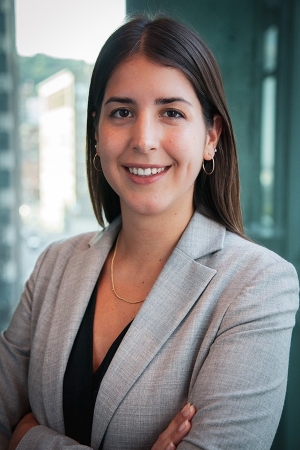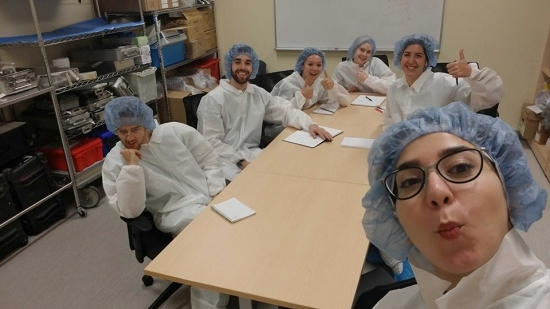This year, I had the pleasure of taking part in the Surgical Innovation Program, a year-long class devoted to developing innovative solutions to unmet needs in the medical sector. Innovations are developed through an entrepreneurship competition, which pushes participants to design and market new medical technologies.
What’s interesting about this initiative is that it is truly a multidisciplinary and collaborative effort with graduate students from McGill University’s Department of Surgery, l’École de technologie supérieure (ETS), and the Department of Computer Science and Software Engineering from Concordia University’s Gina Cody School of Engineering and Computer Science and the John Molson School of Business (JMSB). Students from each partner institution come together to form cross-disciplinary teams to navigate the innovation process. A team consists of 5-6 members with at least one student from each discipline (surgery, engineering, computer science and business). On the first day of class, students indicate what specialty they would like to work in and teams are formed around the specialty (pediatrics, cardiology, general surgery, etc.). Each team is also assigned a mentor in their respective field.
When I heard about this program, I was immediately interested. Having worked as a coordinator in the Royal Victoria Hospital Emergency Department for four years, I’ve witnessed many miraculous moments, but am also aware of the shortcomings in the health care system. Equipped with enthusiasm and business knowledge acquired in the John Molson MBA, I eagerly applied to be a part of the program.
I want to mention that, while I had some exposure to the health sector before starting, this is by no means a prerequisite for being a valuable team member throughout the process. There were many computer scientists, engineers and business students with no medical knowledge whose insights were necessary to address problems in ways that medical practitioners would not have thought of.
The program truly requires an innovative approach and flexes a comprehensive set of skills. We are taught how to brainstorm, how to filter through ideas, and how to come up with new ways to address old problems.
The format of the class is quite unique. It runs across the Fall and Winter semesters, with each semester worth 3 credits. The Fall semester is all about observations and identifying unmet needs in the clinical setting. For this we would tour different departments in the Glen Campus of the McGill University Health Centre (aka the “superhospital” at Vendôme metro station) and observe health care workers in action. We went everywhere in the superhospital; from day clinics to operating rooms, medical floors, the ICU, and even the medical device reprocessing unit. The final deliverable is a presentation and Q&A where teams discuss the top five health care problems or needs they identified, including the decision criteria used. The Fall semester is known as the “needs assessment stage” and is characterized by a lot of observation and “soaking in” of information.
At the beginning of the Winter semester teams are expected to develop a solution that addresses the top need they identified. During this semester, our class met at different locations (from JMSB & ETS classrooms to the McGill’s Steinberg Centre for Simulation and Interactive Learning) to attend lectures, workshops and business coaching sessions delivered by engineers, clinicians, industry experts, entrepreneurs, attorneys and business faculty. The guest lecturers are great because they provide a network of resources; nearly all the guest speakers were happy to share their contact information and were available for follow-up questions or more detailed discussions in the future. Meanwhile, teams are expected to adhere to the critical path set by their Project Manager plan, build a working prototype, prepare a final technical pitch, comprehensive business plan and an elevator-style business pitch by the end of the course.
The program is similar in style to an independent study course. Rather than a typical class format where we have lectures and are tested on the material, in Surgical Innovation, the lectures are meant to give teams ample information on a given topic (such as intellectual property, regulatory approval, the medical device industry or sensor devices). While the lectures provide an abundance of information, not all of it will be pertinent to your particular project. Teams are meant to use the information in a way that will be most beneficial to them when they are designing their device. There is no testing and the grading system is focused on the final product and process rather than the class material.
Though the grading is focused on the end product, the program is still quite demanding with check-ins and milestones throughout the year. There is no blueprint to innovation, but, in my experience, it involved many long nights and early mornings meeting with experts, mentors, team members and anyone who could provide input or value towards refining our team’s device. The computer scientist on our team even had two groups of three undergrads working with her to perfect the UX (User Experience) for our device.
The team with the best final pitch wins a 1-year start-up package with Fasken law firm (which includes incorporation and access to a lawyer) while the top three teams gain entrance into ETS’s accelerator program at CENTECH.

